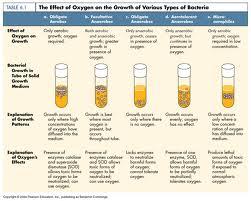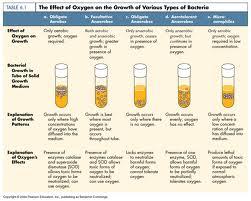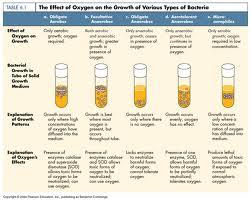Microbial Growth refers to
Increase in number of cells, not cell size.
*Populations
*colonies
The requirements for growth
* Physical requirements (there are 3)
1. Temperature
2. pH
3. Osmotic pressure
The requirements for growth
* Chemical Requirements (there are 5)
1. Carbon
2. Nitrogen, sulfur & phosphorous
3. Trace elements
4. Oxygen
5. Organic growth factor
Physical Requirements
Temperature
* MINIMUM growth temp
* OPTIMUM growth temp
* MAXIMUM growth temp
Psychrotrophs
* Grow between 0°C & 20-30°C
* Cause food spoilage
Food preservation temperatures
What temperatures is the danger zone?
Between 20°C to 50°C
* Rapid growth of bactera; some may produce toxins.
pH
Most bacteria grow between pH
6.5 & 7.5
pH
Molds and yeasts grow between pH
5 & 6
pH
Acidophile grow in _____ environments
acidic
Osmotic Pressure
Hypertonic environments, or an increase in salt or sugar, cause
Plasmolysis
Osmotic Pressure
_____ or ______ require high osmotic pressure
Extreme / obligate halophiles
Obligate →
requires
Facultative →
tolerate
Osmotic Pressure
_______ tolerate high osmotic pressure
Facultative halophiles
*(notice the word tolerate in the question)
Chemical Requirements
Carbon
* Structural organic molecules, energy source
* Chemoheterothrophs use organic carbon sources
* Autotrophs use CO2
Chemical Requirements
Nitrogen
* In amino acids & proteins
* Most bacteria decompose proteins
* Some bacteria use NH4+ or NO-3 (ammonia / Nitrates)
* A few bacteria use N2 in NITROGEN FIXATION
Chemical Requirements
Sulfur
* In amino acids, thiamine, & biotin
* Most bacteria decompose proteins
* Some bacteria use SO2-4 or H2S
Chemical Requirements
Phosphorus
* In DNA, RNA, ATP & membranes
* PO3-4 is a source of phosphorus
Chemical Requirements
Trace elements
* Inorganic elements required in small amounts
* Usually as enzyme cofactors
The effect of Oxygen on the growth of various types of bacteria
Obilgate Aerobes

* Only aerobic growth; oxygen required.
* Growth occurs on where high concentration of oxygen have diffused into the medium.
example: 1st tube at the left
The effect of Oxygen on the growth of various types of bacteria
Facultative Anaerobes

*Both aerobic & anaerobic growth; greater growth in presence of oxygen.
* Growth is best where most oxygen is present, but occurs through out tube.
example: 2nd tube from left
The effect of Oxygen on the growth of various types of bacteria
Obilgate Anaerobes
* Only anaerobic growth ceases in presence of oxygen.
* Growth occurs only where there is no oxygen
(bacteria clumped at bottom of tube)
The effect of Oxygen on the growth of various types of bacteria
Aerotolerant Anaerobes

*Only anaerobic growth, but continues in presence of energy.
*Growth occurs evenly; oxygen has no effect
example: 2nd to the last tube on right
The effect of Oxygen on the growth of various types of bacteria
Microaerophiles
*Only aerobic growth; oxygen required in low concentration.
*Growth occurs only where a low concentration of oxygen has diffused into medium.
example: very last tube on the right.